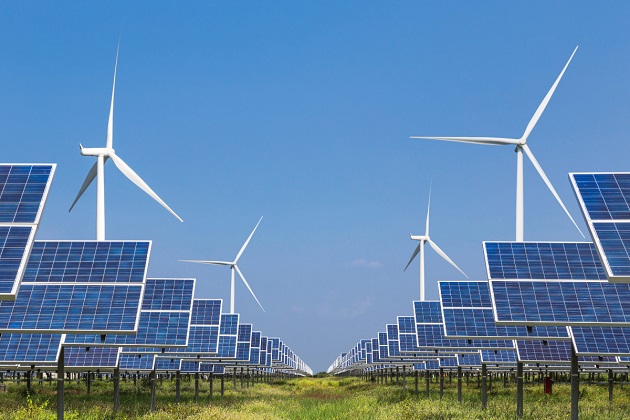A huge global capital pool is mobilising to invest in Renewable Energy and grid projects in India, according to a new IEEFA report, with pull factors including solar power tariffs hitting record lows, plunging solar module costs, record low interest rates, and the security of government-backed, 25-year power purchase agreements (PPAs).
“Domestic and global institutions across the financial, corporate, energy, utility and government sectors are primed to deploy a wall of capital that India needs to fund its ambitious renewable energy targets,” says report co-author Tim Buckley, Director Energy Finance Studies, South Asia, at the Institute for Energy Economics and Financial Analysis (IEEFA).
While the renewable energy sector in India has received more than $US42 billion in investment since 2014, the report highlights that it will require a further US$500 billion in order to reach 450 gigawatts (GW) of capacity by 2030.
This includes the capital cost of adding more than 300GW of new renewables infrastructure, firming low-cost but intermittent renewable power generation, and expanding and modernising grid transmission and distribution.
India could dramatically improve its energy security by reducing reliance on expensive fossil fuel imports. The ongoing solar energy deflation – now around Rs.2/kWh, below the marginal fuel cost of coal-fired power plants – gives India the economic incentive to accelerate its energy transition and be a world leader in helping to solve the climate crisis, plus address chronic air pollution and water stress.
IEEFA’s new report identifies the capital flowing into the renewables sector for new projects and infrastructure investment trust (InvIT) structures, as well as the capital recycling opportunities for the National Investment and Infrastructure Fund (NIIF) for operational projects.
The sources of capital range from private equity, global pensions funds and sovereign wealth funds, to oil and gas majors, multinational development banks and Indian state-owned enterprises and power billionaires.
Indian renewables sector is increasingly dominated by the major independent power producers (IPPs): ReNew Power, Greenko, Adani Green, Tata Power, ACME, SB Energy, Azure Power, Sembcorp Green Infra and Hero Future Energies, and that each has invested strongly in building capacity in international debt and equity markets.
But these renewable energy giants face growing competition from the likes of Vena Energy/Vector Green, O2 Power, Ayana Renewable Power, Torrent Power and Sprng Energy, as well as Government of India fossil fuel majors starting to rise to the decarbonisation challenge such as NTPC and NLC, with Coal India Limited and Indian Railways increasingly looking to pivot aggressively as well.
“The key institutions that are playing a pivotal role in refinancing existing operating renewable energy assets are private equity, sovereign wealth funds, global pensions and infrastructure funds, global fossil fuel utilities, and oil and gas majors. Institutional investors are wary of construction risk,” he says.
India needs more project developers with even greater balance sheet strength to tap this potential while providing more scope for pension investors. The local infrastructure investment trust market is increasingly being seen as a key facilitator of this domestic-foreign capital interplay, opening up and enhancing the depth of the domestic Indian finance sector.”








